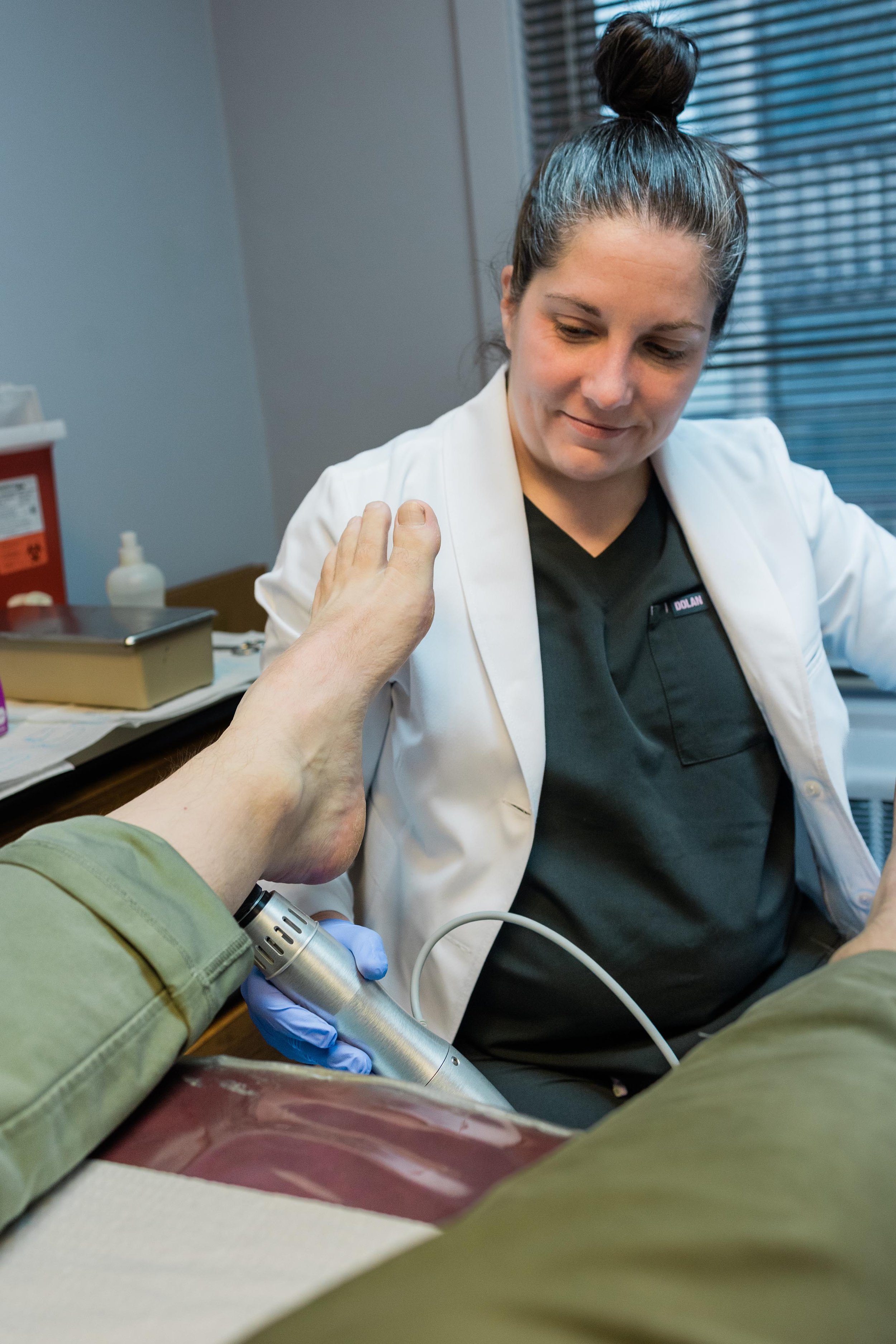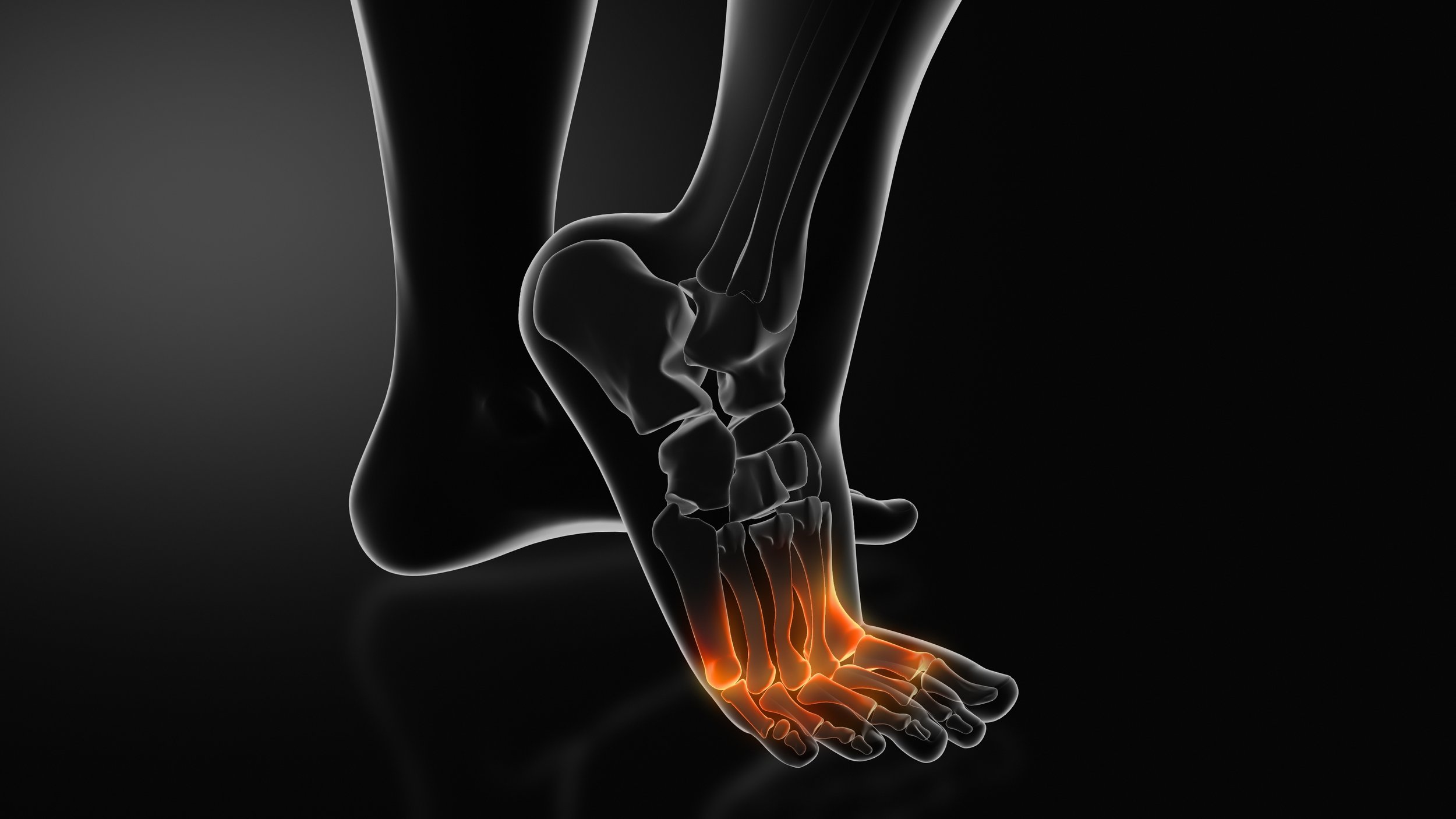Reasons Why You Experience Foot Pain While Walking and What You Can Do About It
Walking without pain is something many of us take for granted.
You expect your feet and ankles to be there for you as you pound the pavement, day in and day out.
Maybe you walk for enjoyment and exercise, knowing how good it is for your body and spirit to engage in this relatively low-impact activity.
Maybe you get your steps in each day as a normal part of your fast-paced career. Many professionals rack up miles each day, simply in the course of their typical work.
When you experience foot pain while walking, it can quickly derail your daily pace and make even the simplest tasks seem impossible and daunting.
If you experience foot pain while walking—you’re not alone.
This is a common issue and complaint for many people—of all ages and levels of activity and fitness.
But what are the causes of foot pain while walking? And what can you do to reduce this issue so it doesn't stop you from living the life you want to live?
This article will explore the many possible causes of foot pain while walking, and will also offer you tips and strategies to address and manage this issue—so you can get back to moving pain-free ASAP!
Let’s dive right in.
What causes foot pain while walking?
As we mentioned, above—foot pain while walking is a common complaint. But that doesn't mean all foot pain is created equal or caused by the same underlying issues.
There are many possible causes of foot pain while walking. That’s why you need to pinpoint what’s causing yours, so you can directly target the issue and avoid making it worse.
Remember—your feet are an intricate ecosystem of bones, muscles, ligaments, and tendons. All these systems work in balance and coordination with one another, to keep you upright, mobile, and pain-free.
That’s why it’s important to get your chronic foot pain assessed by a professional to help determine the exact cause of your pain and help you develop an effective treatment strategy to address it.
A podiatrist is your go-to professional when it comes to foot pain. They can help you diagnose the cause of your issues, develop a course of treatment, and get you back on your feet again—literally!
Interested in learning more about what podiatrists can offer you when you experience issues with your feet, toes, and ankles? Check out this helpful article, all about the field of podiatry.
The most common culprits of foot pain while walking include—
Overuse—sometimes, foot pain while walking can be due to simply walking too much and too often. Your feet may need a break to rest and recover. But, be cautious about writing off your foot pain while walking as being due to overuse. You first want to rule out any other possible causes, such as underlying injuries or medical conditions.
Plantar fasciitis—fascia is your body’s network of connective tissue that holds your bones, organs, and blood vessels together. Your plantar fascia is a thick band of this connective tissue that supports the muscles and bones of the bottom of your feet and connects your heels to the base of your toes. Its primary role is to help support your arches and act as a shock absorber when you’re walking and running. Sometimes, stress and strain on your feet can cause small tears to form in your plantar fascia. When this happens, the fascia can become irritated and inflamed, causing pain and discomfort when walking. In many cases, plantar fasciitis presents as sharp, stabbing pain in the heel. It may be the worst first thing in the morning, or it may get worse when you have long periods of standing or walking.
Foot sprain or strain—a foot sprain happens when a ligament that connects the bones of your feet stretches or tears. If you experience a moderate or severe sprain, chances are you probably know something’s wrong. But, if you have a mild sprain, you may not realize the underlying cause. And that could lead to further injury. Foot sprains often cause pain that’s felt primarily in the middle of the foot, swelling, redness, and bruising. You may have difficulty bearing weight on the affected foot. In some cases, foot sprains can heal on their own with a combination of rest, icing, compression, and elevation (also known as the RICE protocol). But, in other cases, and when the pain persists, you may need to be evaluated and treated by a qualified healthcare provider like a podiatrist.
Morton’s neuroma—if you experience foot pain in the ball of your foot or between your third and fourth toes, this may be the cause. Morton’s neuroma occurs when the tissue around a nerve in your foot becomes thicker. It often occurs after the nerve has been irritated or damaged in some way. It can cause sharp, stabbing pain in the ball of your foot, or can also feel like you’re stepping on a pebble in your shoe. Morton’s neuroma can be exacerbated when you wear high heels or shoes that are too tight. It can also become aggravated by high-impact activities and sports.
Your shoes—it’s no big secret that your shoes have an impact on how your feet feel. Shoes that are too tight, not supportive, or that force your feet into a non-optimal position can impact your foot health and well-being—both in the short and long term. High heels are well-known culprits of foot pain and discomfort, but they’re not the only footwear that can cause issues. Especially when you’re on your feet and moving around for long periods—wearing the right footwear can make a huge difference in your overall health and wellness.
Arthritis—arthritis can impact the joints of your feet and ankles, causing them to become inflamed. This inflammation in your feet and ankle joints can cause you pain and stiffness when moving. Your feet and ankles have many different joints and bones that can become affected by arthritis. Arthritis in your feet and ankles can show up as pain, stiffness, swelling, or difficulty in moving and walking.
Tendonitis—your tendons are the sturdy bands of connective tissue that connect your muscles to your bones. When they become overused or injured, they can develop inflammation and irritation that leads to tendonitis (also sometimes written as tendinitis). Your feet have four major tendons that are most commonly impacted by tendonitis. Tendonitis can happen suddenly or it can be chronic. It’s common in athletes and active people, who may stress their foot tendons in the course of their high level of physical activity. Symptoms of tendonitis often include pain along the length of the foot where the affected tendon runs, stiffness, swelling, redness, and pain that increases with activity.
Metatarsalgia—your metatarsals are the long bones in the middle of your feet, below your toes. Excess pressure on these bones can sometimes cause inflammation and pain in this region. Metatarsalgia is an issue that occurs when these bones become inflamed and cause pain in the ball of your foot. The signs and symptoms of metatarsalgia can be similar to other issues (such as Morton’s neuroma), so it’s important to seek out assessment from a qualified professional like a podiatrist to pinpoint the underlying cause of your foot pain.
Fallen arches/flat feet—the arches in your feet form during childhood, at around age six. Your foot arches help you with balance, shock absorption, and flexibility. Some people don’t develop arches during childhood, others have arches that develop but collapse later on in one or both feet. If your feet are naturally flat or your arches fall, you may experience foot pain as a result. Flat feet can also cause muscle cramps and aches, as a result of the increased stress and strain flat arches put on your surrounding musculature of the feet, ankles, and legs.
Now that you know several of the common culprits for foot pain while walking, let’s explore some different ways you can address your issues so you can get back on your feet again.
What can I do if I experience foot pain while walking?
When you experience pain in your feet when walking, it can easily derail you from keeping pace with your daily routine and health and fitness goals.
It’s important not to ignore foot pain when it occurs, as it’s likely your body’s way of telling you something is wrong and needs to be investigated.
If you experience foot pain while walking that comes and goes, it may be helpful to keep a journal or jot down notes to help you recognize when your pain seems to occur. Writing down your symptoms and what you were doing when you experienced the pain may help you or a healthcare professional to recognize any relevant patterns and to better understand and diagnose the issue.
For some types of foot pain, icing can help reduce swelling and pain. For others, resting and elevating your feet and legs can help reduce pain, inflammation, and swelling.
In some cases, over-the-counter pain and anti-inflammatory medications such as ibuprofen may do the trick. In others, a new pair of well-fitting, supportive shoes might help.
The concern with foot pain while walking is that it can result from many different underlying causes—several of which have very similar outward symptoms.
That’s why it’s always wise to have your foot pain while walking assessed by a qualified healthcare professional.
A foot specialist like a podiatrist can help you assess and pinpoint the cause of your foot pain while walking and they can support you in developing and undertaking a treatment plan to address your issues.
Let’s review when it’s best to consult with a podiatrist about your foot pain while walking.
When should I see a doctor about my foot pain while walking?
If your foot pain persists, is severe, or keeps you from engaging in your life as usual—it’s wise to schedule an appointment with a doctor for further assessment.
A podiatrist is a specialist in evaluating and treating issues related to the feet, ankles, and lower legs. Podiatrists are doctors who focus on diagnosing and helping people with their feet, toes, and ankles.
Interested in learning all about the specialized field of podiatry? Be sure to check out our deep dive article, all about podiatrists and how they help.
If you're concerned about your foot pain, don’t hesitate to reach out for a professional assessment and opinion to set your mind at ease.
If you’ve adopted a “wait and see” approach and your foot pain hasn’t improved in a few days to a week, it’s best to see a doctor for further evaluation. If your foot or ankle is swollen for more than a day or two, it’s also wise to connect with a doctor.
There are also many instances where following a “wait and see” protocol for your foot or ankle pain is a risk you don’t want to take.
You should always schedule an appointment to see your doctor or podiatrist when you experience—
Severe pain or swelling
Redness, tenderness, or heat coming from your impacted foot or ankle or a fever
Inability to walk or bear weight on your affected side
An open or oozing wound
Burning, numbness, or tingling sensations, especially on the bottom of the foot
Any of these symptoms could point to something more severe afoot that needs prompt medical assessment and attention from a qualified healthcare professional.
If you’re diabetic, it’s especially vital for you to seek out podiatry care for any foot and ankle issues, particularly those involving wounds.
Next, let’s look at some of the possible treatments podiatrists have at their disposal to help treat your foot pain while walking.
What treatments are available to address my foot pain?
The first step when you visit a podiatrist is typically to conduct a thorough physical exam to assess and diagnose the nature of your foot pain while walking.
Your podiatrist will assess your feet and ankles and obtain your relevant medical history. They’ll also want to hear about your concerns and learn how and when the issue occurred, your pain levels, and whether the issue is constant, worsening, or comes and goes.
Your podiatrist may also wish to perform an X-ray to further assess the underlying structures of your feet and ankles to help them pinpoint your diagnosis and develop an appropriate course of treatment.
At City Step Podiatry, we cater to busy, active Chicagoans. That’s why we offer in-house digital X-ray services, so you can make the most of your visit to our convenient downtown Chicago office.
We’re also proud to offer several state-of-the-art therapies and treatments designed to address foot pain while walking.
These include—
Custom orthotics—custom orthotic inserts are created from a specialized mold of your foot and designed to cushion and support your feet and ankles in all the individualized ways they need to feel their best. At City Step Podiatry, we’ll work closely with you to ensure your custom orthotics are the perfect fit. We’ll even let you wear them for a month, so you can get to know them and let us know if there are any tweaks we can make so they’re a perfect fit for you. Custom orthotics can offer a great solution for foot pain, pressure, and discomfort.
Remy class IV laser therapy—imagine treating your foot pain and discomfort while feeling like you’re receiving a spa treatment. That’s how many patients describe their Remy laser therapy treatments. This therapy is shown to be an effective treatment for many types of foot issues and conditions, from tendonitis and arthritis to plantar fasciitis, pinched nerves, ankle sprains, and even toenail fungus! Laser therapy also helps with inflammation and stiffness and promotes healing. The procedure involves treating the area with a high-power diode laser. This safe device produces a warm sensation that targets underlying issues at the source. Treatments are quick and safe and can be done right in our downtown office on your lunch break!
Radial Shockwave Therapy—it may be shocking to learn about all the benefits of Shockwave Therapy for your feet and ankles! This cutting-edge therapeutic technique is a non-invasive way to treat foot and ankle pain and discomfort, quickly and effectively. This state-of-the-art therapy promotes healing and stimulates circulation in your feet and ankles. It’s an effective treatment for many causes of foot pain while walking, including foot wounds, Achilles tendinitis, and plantar fasciitis. Treatments last around five minutes each and are typically performed weekly for around a month. Many people report a significant improvement in their foot pain upon receiving this treatment.
If you’re experiencing foot pain while walking or any other conditions that are impacting your feet, ankles, and ability to get around in Chicago—get in touch with us! City Step Podiatry is here to support active Chicago residents like you and to help you feel your best in this wonderful city we call home.
If you’re experiencing foot pain while walking, don’t wait to seek out the support you need to get back to living pain-free. We’re here for you and ready to help you with our clear communication, caring team, and cutting-edge therapeutics.
With our convenient downtown Chicago office location, it’s easy to take great care of yourself with City Step!
Don’t wait to treat your foot pain while walking—City Step Podiatry is here to offer you the podiatry care and services you need, without throwing you off your busy schedule. Visit our downtown Chicago office for the top-quality, comprehensive podiatry care you need to feel your best. Give us a call, complete our contact form, or schedule your appointment online.
City Step Podiatry is here for you! Reach out today to schedule your visit and treat your feet to the care they deserve.











